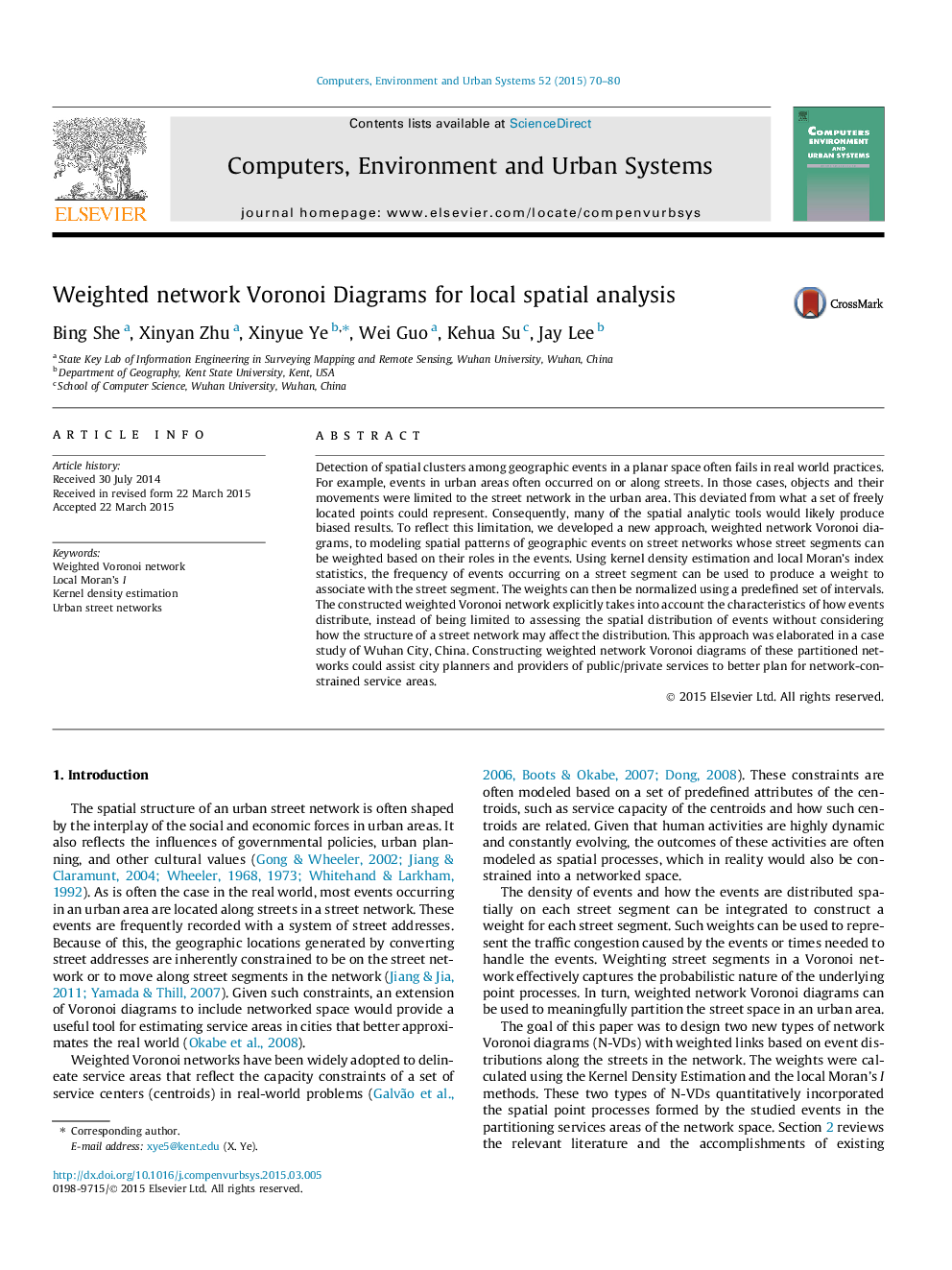| Article ID | Journal | Published Year | Pages | File Type |
|---|---|---|---|---|
| 6921971 | Computers, Environment and Urban Systems | 2015 | 11 Pages |
Abstract
Detection of spatial clusters among geographic events in a planar space often fails in real world practices. For example, events in urban areas often occurred on or along streets. In those cases, objects and their movements were limited to the street network in the urban area. This deviated from what a set of freely located points could represent. Consequently, many of the spatial analytic tools would likely produce biased results. To reflect this limitation, we developed a new approach, weighted network Voronoi diagrams, to modeling spatial patterns of geographic events on street networks whose street segments can be weighted based on their roles in the events. Using kernel density estimation and local Moran's index statistics, the frequency of events occurring on a street segment can be used to produce a weight to associate with the street segment. The weights can then be normalized using a predefined set of intervals. The constructed weighted Voronoi network explicitly takes into account the characteristics of how events distribute, instead of being limited to assessing the spatial distribution of events without considering how the structure of a street network may affect the distribution. This approach was elaborated in a case study of Wuhan City, China. Constructing weighted network Voronoi diagrams of these partitioned networks could assist city planners and providers of public/private services to better plan for network-constrained service areas.
Related Topics
Physical Sciences and Engineering
Computer Science
Computer Science Applications
Authors
Bing She, Xinyan Zhu, Xinyue Ye, Wei Guo, Kehua Su, Jay Lee,
